Discover 15 hidden attractions, cool sights, and unusual things to do in Kielce (Poland). Don't miss out on these must-see attractions: Palace of the Kraków Bishops in Kielce, Muzeum Narodowe w Kielcach, and Kielce Cathedral. Also, be sure to include Jan Kochanowski University in your itinerary.
Below, you can find the list of the most amazing places you should visit in Kielce (Świętokrzyskie).
Table of Contents
Palace of the Kraków Bishops in Kielce

Also known as: Pałac Biskupów Krakowskich w Kielcach
Museum in Kielce, Poland. The Palace of the Kraków Bishops in Kielce, was built in the 17th century as a summer residence of Bishops of Kraków in Kielce, Poland. The architecture of the palace constitutes a unique mélange of Polish and Italian traditions and reflects political ambitions of its founder. Currently the palace houses a branch of the National Museum with an important gallery of Polish paintings.[1]
Address: Plac Zamkowy 1, Kielce
Muzeum Narodowe w Kielcach
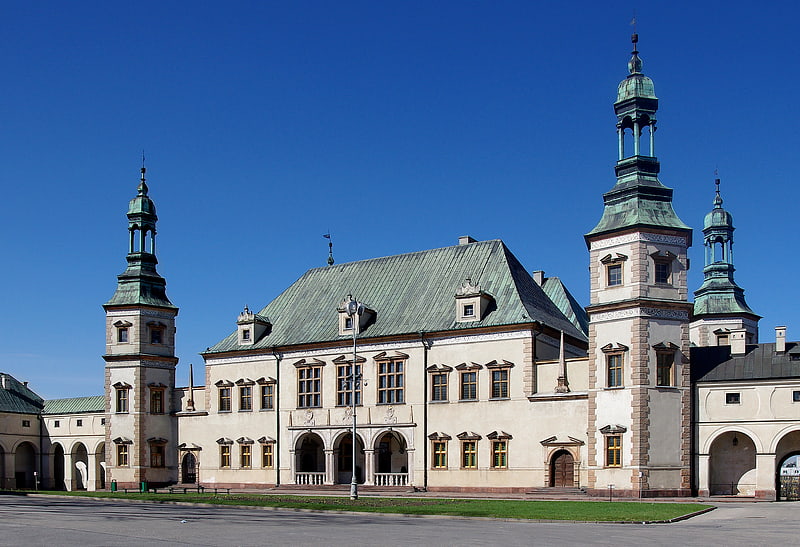
Museum in Kielce, Poland. National Museum in Kielce is a museum located in the Palace of the Kraków Bishops, Kielce, Poland. Its collections include valuable exhibits in the field of painting, handicraft, folk art, archeology, and natural sciences.[2]
Address: pl. Zamkowy 1, Kielce
Kielce Cathedral
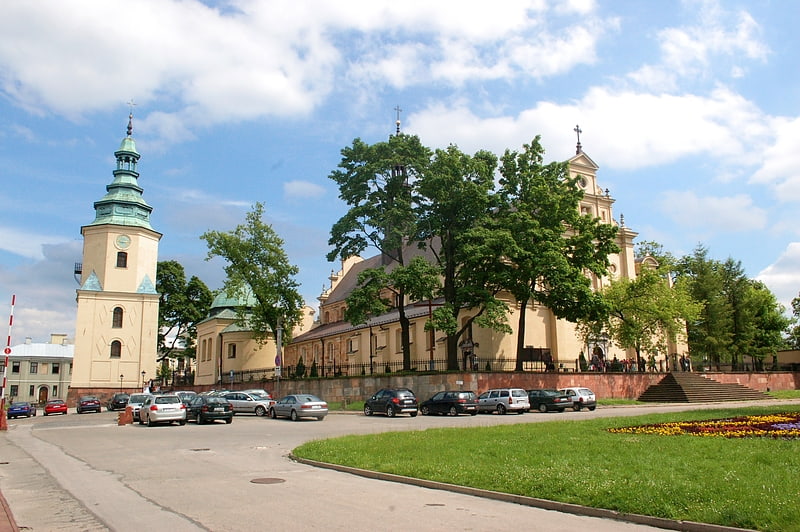
Also known as: Bazylika katedralna Wniebowzięcia Najświętszej Maryi Panny w Kielcach
Cathedral in Kielce, Poland. The Cathedral Basilica of the Assumption of the Blessed Virgin Mary simplified to Kielce Cathedral, is a Roman Catholic church that has the status of cathedral and basilica located in the city of Kielce in Poland. It is located in the "Castle Hill" in the heart of the city, next to the Palace of the Bishops of Kraków, also a famous landmark.
It was built during the 12th century by the Bishop of Kraków, Gedeon. It was destroyed by the tartars in 1260. Then, in 1719 Bishop Kazimierz Lubienski began to reconstruct the building in the early Baroque style that still characterizes it. Inside, the three ships have a variety of colors in the frescoes of painters of the nineteenth century Kraków. The high altar, the work of Fontana, is also baroque and rococo style.
The cathedral is a shrine of Our Lady of Graces (Matka Boża Łaskawa). The icon of Blessed Virgin Mary was crowned in 1636, but the silver-gold dress together with many votive offerings, left as thanksgivings, were stolen. It was crowned again in 1872.[3]
Address: pl. Najswietszej Maryi Panny 3, 25-010 Kielce
Jan Kochanowski University
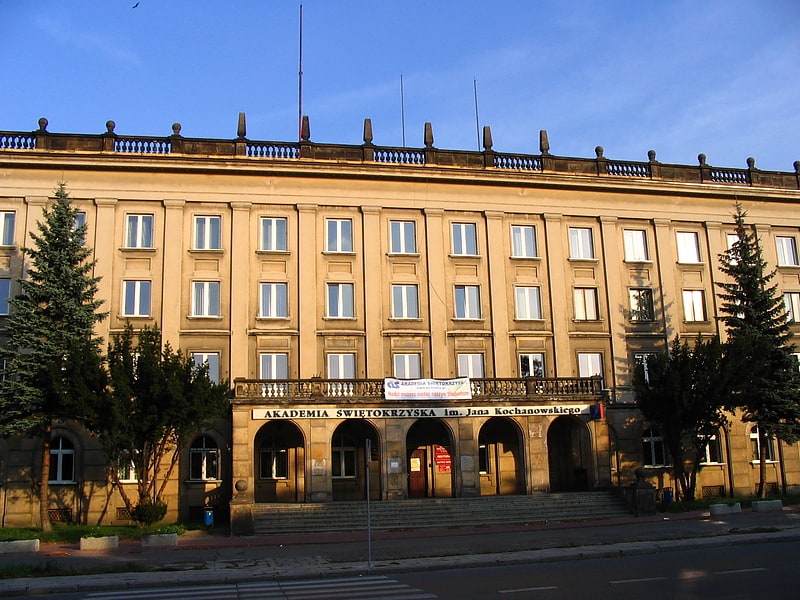
Also known as: Uniwersytet Jana Kochanowskiego w Kielcach
University in Kielce, Poland. Jan Kochanowski University in Kielce, formerly the Holy Cross Academy and the Jan Kochanowski University of Humanities and Sciences; is a public university in Kielce, Holy Cross Province. It is named after Jan Kochanowski, and was established in 1945, dating its tradition to an educational institution, specialising in pedagogy.[4]
Address: Ul. Żeromskiego 12, Kielce
Homo Homini
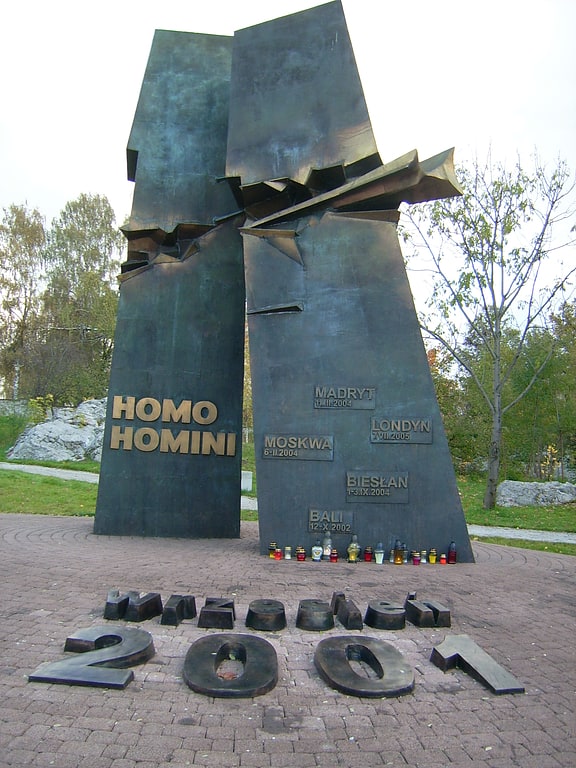
War memorial in Kielce, Poland. Homo Homini is the first monument in Europe to commemorate the victims of the September 11 attacks in the United States. It is located in Kielce in Poland. The monument was designed by Adam Myjak and was unveiled on September 11, 2006, on the fifth anniversary of the attacks. During the opening ceremony, George W. Bush's letter to citizens of Kielce was read out, and students from Kielce schools lit up grave candles. Each grave candle was inscribed with information, giving a single victim's name and occupation.
The monument consists of two seven-meter pillars, placed perpendicularly, each leaning towards the other, criss-crossed by two planes. Plates with the names of the cities where the terrorist attacks took place, are screwed to one of the pillars.[5]
Jewish Cemetery
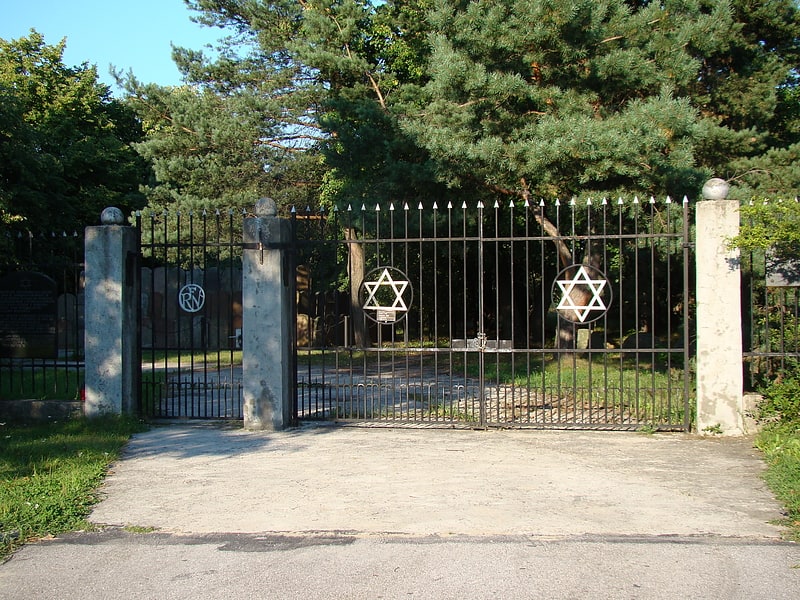
Also known as: Cmentarz żydowski w Kielcach
Necropolis. The Kielce Jewish Cemetery is located in the Pakosz District of Kielce, Poland, at the intersections of Pakosz Dolny and Kusocińskiego Streets. It has an area of 3.12 hectares. There are about 330 tombstones saved and preserved inside the necropolis, of which about 150 are arranged in the form of a lapidary monument. The cemetery is closed to visitors without special permit.[6]
Muzeum Lat Szkolnych Stefana Żeromskiego
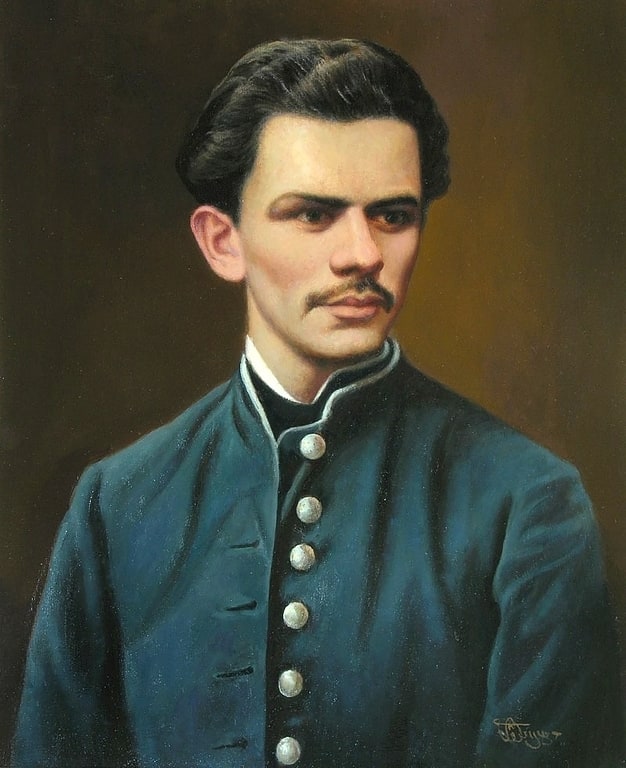
Museum of Stefan Żeromski's School Years - a branch of the National Museum in Kielce.
Address: 5 Jana Pawła II, Kielce
Toy Museum
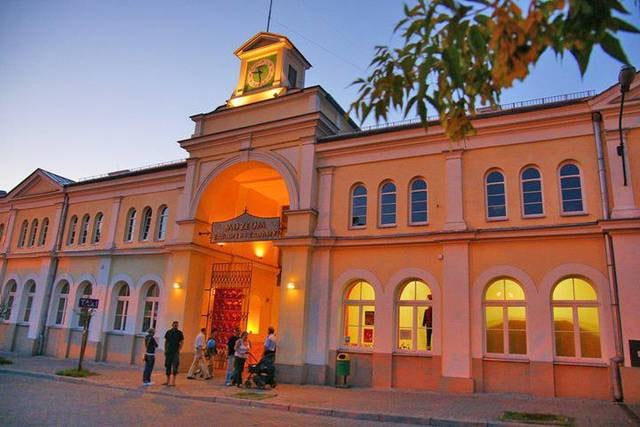
The Museum of Toys and Play in Kielce was established in 1979 as the Toy Museum. It has a huge collection of both historical and modern toys. It is located in Kielce at 2 Wolności Square.
Address: pl. Wolnosci 2, 25-367 Kielce
Muzeum Historii Kielc
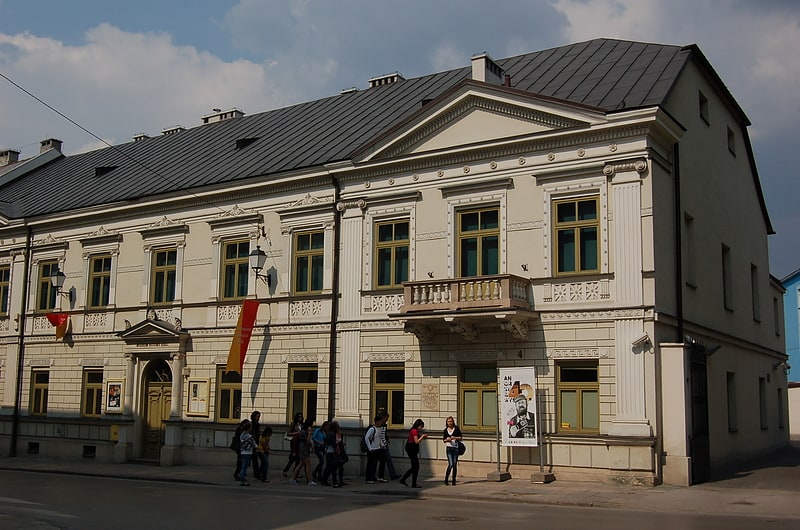
Museum of the History of Kielce - a museum operating in Kielce since February 1, 2008.
The decision to establish the museum was made on 1 September 2006 by the City Council. On October 30 of the same year, the new institution received a tenement house at 4 Św. Leonarda Street, built in the second half of the 19th century and renovated in 2004-2006. In 2011 it was visited by approximately 20 thousand people. It was popular mainly for its workshops, meetings, concerts and the "Trolley with History" - a series of meetings presenting the fate of a particular place. In 2014, the museum was visited by 17,822 people compared to 23,299 in 2013.
The museum has a permanent exhibition entitled "From the History of Kielce". It presents the history of the city in the Middle Ages, in the period when it belonged to the bishops of Cracow, and in the 19th and 20th centuries, when Kielce became the capital of the region.
The Museum is active in publishing. Published so far are, among others: six volumes of Museum-Historical Studies, six volumes of the series "Sources to the History of Kielce", and the series "Kielce Biographies", which includes biographies of Stefan Artwiński, Antoni Heda and Mieczysław Koczanowicz. The Museum of the History of Kielce has also initiated the creation of a monograph of the city, which was published in 2014 entitled Kielce through the Centuries.
Address: ul. Swietego Leonarda 4, 25-311 Kielce
Pałac Tomasza Zielińskiego
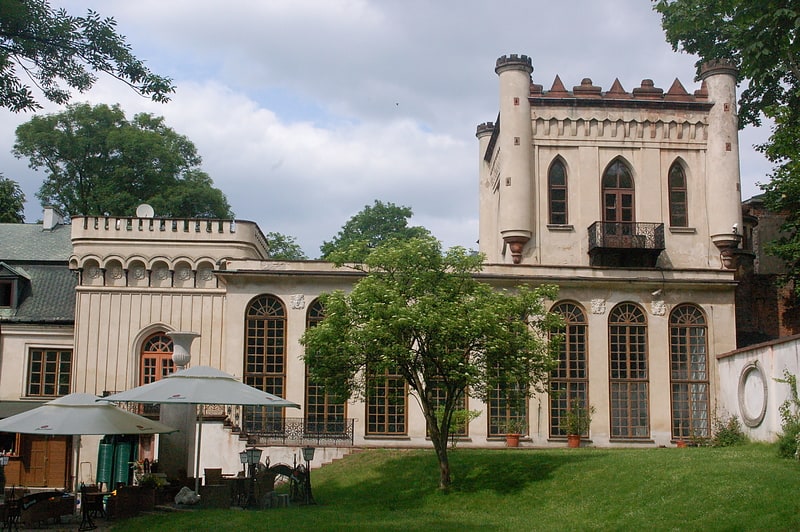
Tomasz Zielinski Palace - a historic building in the center of Kielce located next to the Cracow Bishops' Palace on Zamkowa Street. The interior of the palace includes over a dozen rooms, such as: Concert Hall, Club Hall, Portrait Hall, café, library, two towers, orangery. The palace is surrounded by a garden, where there is a well with a roof, a commemorative column, and in summer there is a cafe under umbrellas. The whole is surrounded by a wall of different heights with shooting holes. On the wall there is a small tower called "Gossip Girl".
The palace owes its name to Tomasz Zielinski, who in 1847-1858 leased the building from the government and transformed it into a palace-garden complex. During his stay there, he arranged a museum and a center of patronage of artists in the palace, where he hosted famous painters: Józef Szermentowski, January Suchodolski, Wojciech Gerson and Franciszek Kostrzewski. Since 1985, it has been the seat of the House of Creative Environments, which organizes exhibitions, concerts and meetings with people of art, science and politics.
The historic palace complex, entered in the register of immovable monuments (Reg. No.: A.379/1-3 of 3.01.1970), apart from the palace includes: an outbuilding built between 1848-1856, an orangery from the years 1851-1856, a fence, a wall with a gate and a "Plotter" tower from the years 1850-1856, and an eighteenth-century garden rebuilt in 1854.
Near the palace there is a red city trail leading through historic and interesting places in Kielce.
Address: Zamkowa 5, Kielce
Hala Legionów
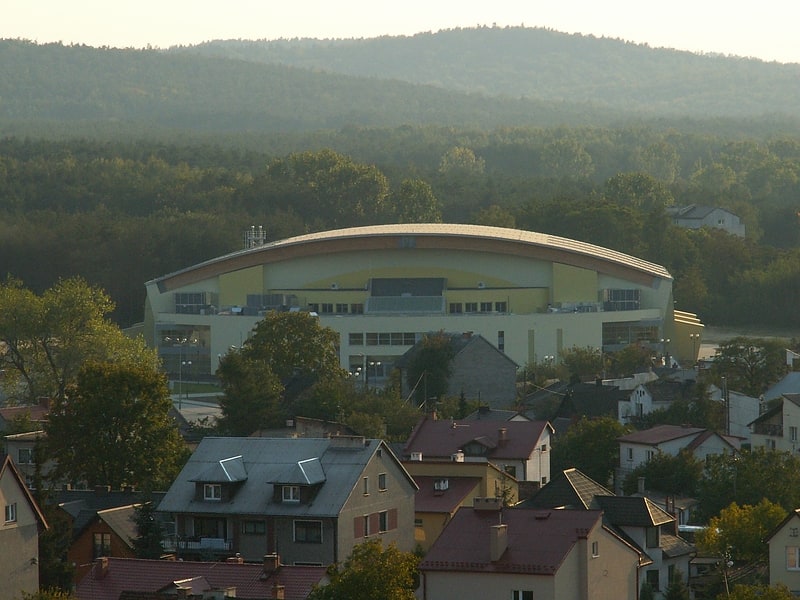
Sports facility in Kielce, Poland. Hala Legionów in Kielce is a multi-purpose sports facility, opened on 25 August 2006. Its most popular tenant is the Polish handball club, Vive Kielce. Hala Legionów has 3,030 permanent and 1,170 additional seats, totaling 4,200 of maximum capacity.[7]
Address: 2 Leszka Drogosza, Kielce
Amfiteatr Kadzielnia

Concerts and shows, Theater
Address: Al. Legionów, Kielce
Kościół pw. Przemienienia Pańskiego w Kielcach - Białogonie

Church of the Transfiguration in Kielce - Białogon is a Roman Catholic parish church located in Kielce, Białogon district. It belongs to Kielce-Western Decanate. It is located on Fabryczna Street.
Address: 1 Fabryczna, Kielce
Centrum Geoedukacji
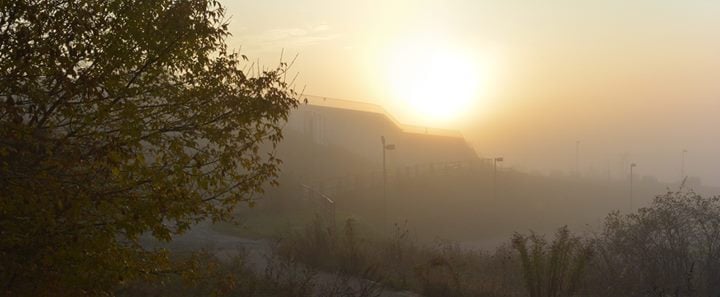
Museum
Address: ul. Daleszycka 21, 25-202 Kielce
Kościół pw. Świętego Józefa Robotnika
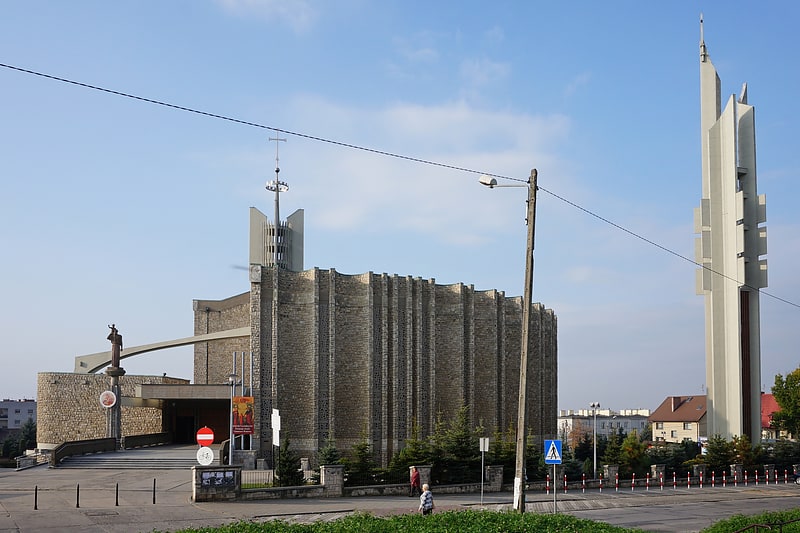
Church
Address: Turystyczna 3, 25-545 Kielce